Your Kitchenaid dishwasher starts flashing the “Clean” light and beeping repeatedly, it can be both confusing and frustrating. These signals are your dishwasher’s way of telling you that something isn’t quite right. While it might look like the cycle completed, the flashing and beeping often point to an underlying issue that needs attention. It could be as simple as a power hiccup or something more involved like a component failure. Understanding what your dishwasher is trying to communicate is the first step toward solving the problem.
Common Reasons Your Kitchenaid Dishwasher Is Flashing Clean and Beeping
There are several potential causes behind a flashing “Clean” light paired with beeping sounds. The most common reasons include power interruptions during a cycle, a door latch that didn’t close properly, clogged filters, or water flow problems. Sometimes, it’s a sensor malfunction or an internal error code that your dishwasher is alerting you to. Identifying the cause helps you fix the issue faster and ensures that your appliance continues to run efficiently.
What the “Clean” Light Means on Your Kitchenaid Dishwasher
The “Clean” light typically indicates that a wash cycle has completed. However, if it starts blinking instead of staying solid, it suggests an error was detected at the end of the cycle. This blinking is often accompanied by beeping to grab your attention. It’s a built-in feature to alert you to issues such as incomplete cycles, drainage problems, or temperature inconsistencies.
Why Your Dishwasher Keeps Beeping After the Cycle Ends
Beeping after a cycle might seem harmless, but it’s often a sign that something didn’t go as planned. It could mean the dishwasher didn’t drain properly, the water wasn’t hot enough, or the door was opened too soon. These warning beeps help prevent damage to your appliance and your dishes by notifying you right away when a problem needs to be addressed.
Error Codes and What They Indicate
Kitchenaid dishwashers use error codes to make troubleshooting easier. These codes show up on the display and usually correspond with the flashing “Clean” light. For example, error code 6-1 may point to a water inlet issue, while 7-1 can signal a heating element failure. Learning to read and understand these error codes can save time and possibly avoid an unnecessary service call.
Step-by-Step Guide to Troubleshooting the Problem
Step 1: Check for Power Interruptions
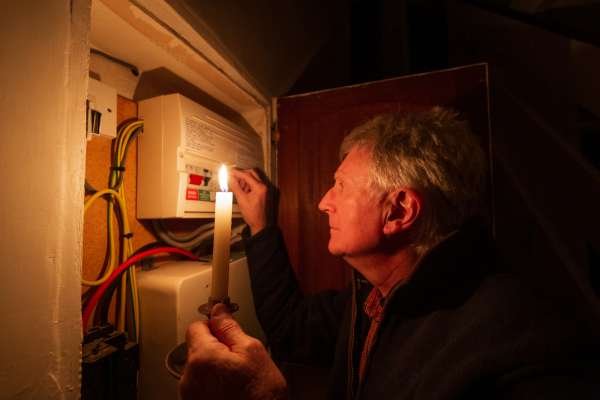
A sudden loss of power can disrupt the cycle and cause the “Clean” light to flash. Check your home’s circuit breaker and ensure the dishwasher’s plug hasn’t come loose. If a power outage occurred mid-cycle, your dishwasher may need a manual reset to return to normal.
Step 2: Inspect the Control Panel for Error Codes

Look at the control panel to see if any error codes are displayed. These codes are key indicators of what went wrong. Refer to your user manual or look up the code online to find specific instructions for resolving the issue tied to that code.
Step 3: Reset the Dishwasher
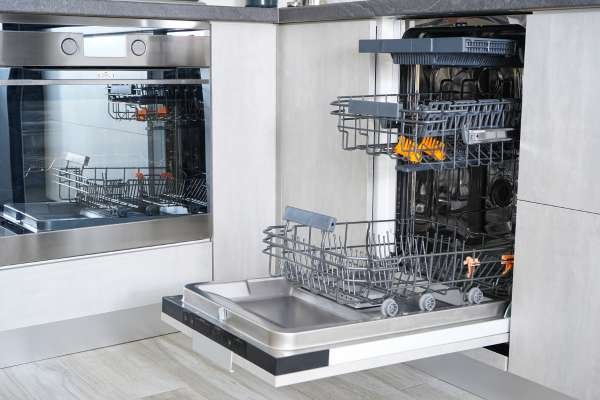
Resetting your dishwasher is often the quickest fix. To do this, press and hold the “Start/Reset” button for a few seconds or turn off the power at the breaker for one minute. Once reset, run a quick cycle to see if the flashing and beeping return.
Step 4: Examine the Door Latch
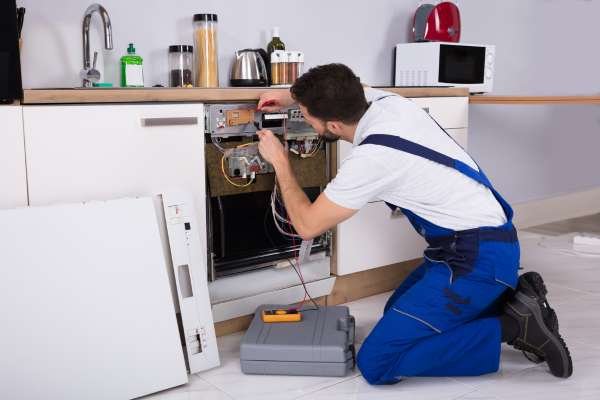
If the door isn’t properly closed or the latch is faulty, the dishwasher may not start or finish the cycle correctly. Open and close the door firmly, and inspect the latch mechanism for wear or damage. Replacing a broken latch is a relatively simple fix that can resolve the issue entirely.
Step 5: Clean the Filters and Drainage Area
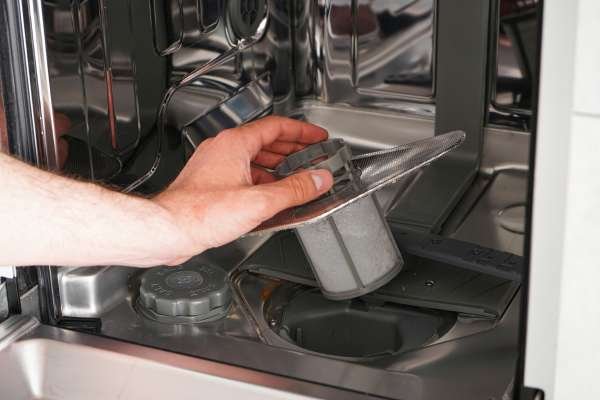
Food debris and grease buildup in the filter or drainage area can trigger the “Clean” light error. Remove the bottom rack and unscrew the filter cover. Rinse the filters thoroughly and clear any blockages in the drain area. Regular cleaning helps prevent future interruptions.
Step 6: Inspect Water Inlet and Drain Hoses
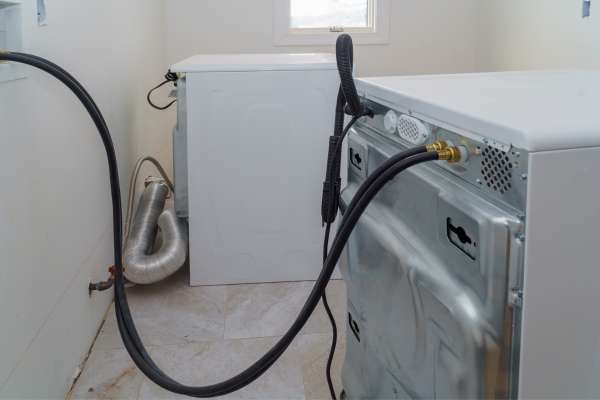
A kinked or clogged hose can restrict water flow in or out of the dishwasher, causing it to stop mid-cycle. Carefully pull the dishwasher out and examine both the inlet and drain hoses for signs of damage or blockage. Clearing any obstructions can restore proper function.
Step 7: Run a Diagnostic Cycle
Most Kitchenaid dishwashers come with a diagnostic mode that runs a self-check. To activate it, press a specific sequence of buttons (usually listed in the manual or online). This cycle will test all major components and display any stored error codes, giving you a clearer picture of the problem.
How to Perform a Hard Reset on Your Kitchenaid Dishwasher
When your Kitchenaid dishwasher is stuck flashing the “Clean” light and making that persistent beeping noise, a hard reset might be just what it needs. Performing a hard reset helps clear any temporary glitches or errors stored in the control board. To do this, turn off the dishwasher at the circuit breaker or unplug it from the wall outlet. Leave it disconnected for about 5 minutes. This pause gives the internal electronics time to reset. After reconnecting the power, try running a new cycle to see if the issue is resolved. A hard reset is often an effective, first-line solution to electronic hiccups.
When and How to Run a Diagnostic Test Cycle
If a reset doesn’t fix the problem, running a diagnostic test cycle can help pinpoint the issue. This built-in function checks all major components—like the heating element, water inlet, and sensors—and reveals any error codes. To start the test, press a specific button combination, such as “Heated Dry,” “Normal,” “Heated Dry,” “Normal” (check your model’s manual for the exact sequence). The dishwasher will run a brief series of tests and flash codes that correspond to any problems it detects. This process is a powerful tool for identifying hidden issues without disassembling the appliance.
Is Your Dishwasher Stuck in a Cycle? Here’s What to Do
A flashing “Clean” light might mean your dishwasher is stuck in a cycle and didn’t complete properly. This can happen if there’s a power interruption, a drainage issue, or a communication error between components. Start by resetting the dishwasher and making sure all water has drained. If that doesn’t work, open the door and close it firmly to ensure it latched properly. You can also try canceling the current cycle and starting a new one. If your dishwasher continuously gets stuck, it may point to deeper electrical or software issues that require professional diagnosis.
The Role of a Faulty Door Latch in Beeping and Flashing
A faulty or misaligned door latch is one of the most overlooked causes of the flashing clean light and beeping issue. The door latch plays a critical role in starting and completing cycles safely. If the latch doesn’t close securely or the internal switch doesn’t register that the door is shut, the dishwasher may stop mid-cycle and start beeping to alert you. Over time, the latch can wear out or shift from frequent use. Replacing it is usually a straightforward fix and can restore your dishwasher to proper working order.
How Sensor Malfunctions Can Trigger the Clean Light and Beeping
Modern dishwashers rely heavily on sensors to monitor water levels, temperature, and cleanliness. If one of these sensors malfunctions—due to age, buildup, or wiring issues—it can send false signals to the control board. The result? The dishwasher ends early, flashes the “Clean” light, and starts beeping. Common sensor issues include temperature sensors that don’t detect proper heat or turbidity sensors that think dishes are still dirty. If a diagnostic cycle reveals a sensor error code, you may need to clean, recalibrate, or replace the faulty component.
Preventing the Problem from Happening Again
Once you’ve resolved the issue of your Kitchenaid dishwasher flashing “Clean” and beeping, the next step is making sure it doesn’t happen again. Preventive care is the key. Avoid overloading the dishwasher, as that can block water flow and stress internal components. Always scrape off large food particles before loading dishes, and run hot water at the sink before starting the cycle to help the dishwasher fill with warm water from the start. Keeping an eye On small habits like these can go A long way toward preventing future disruptions.
Quick Fixes You Can Try Before Calling a Technician
Sometimes, the solution is simpler than you think. If your dishwasher is beeping and flashing, try these quick fixes before reaching out for help. Reset the machine using the power button or breaker. Open and firmly close the door to ensure the latch is secure. Clean the filters and check the drain for blockages. If there’s standing water, try running a short rinse cycle. Often, these small steps can clear the error and get your appliance running smoothly again—saving you time and the cost of a service visit.
When It’s Time to Contact a Professional
If you’ve gone through all the basic troubleshooting steps and the problem persists, it’s time to call in a professional. Persistent error codes, electrical malfunctions, or water damage are signs you shouldn’t ignore. A technician has the tools and training to diagnose internal issues—like faulty control boards or damaged wiring—that can’t be fixed at home. Calling a certified appliance technician ensures that the problem is properly addressed without risking further damage to your dishwasher.
How to Maintain Your Kitchenaid Dishwasher for Optimal Performance
Regular maintenance is essential for keeping your Kitchenaid dishwasher running smoothly. Start by cleaning the filters once a month and wiping down the door seals to prevent mold and mildew. Use a dishwasher cleaner every few weeks to break down grease and mineral buildup in the spray arms and pipes. Inspect hoses for leaks and make sure your detergent dispenser is working correctly. These routine tasks can prevent the types of errors that lead to beeping and flashing lights, and they only take a few minutes each month.
Tips to Extend the Life of Your Dishwasher
To get the most out of your Kitchenaid dishwasher, treat it with care. Always use the recommended detergent and avoid pre-rinsing dishes, as modern dishwashers are designed to sense food particles. Don’t run half-empty loads regularly—it wastes water and energy. Keep the exterior clean and dry, And run full cycles using heated dry when possible to prevent moisture damage. Finally, stay on top of repairs And don’t ignore warning signs. A little attention now can save you from costly replacements later.
Conclusion
Dealing with a Kitchenaid dishwasher that’s flashing the “Clean” light And beeping can be frustrating, but it’s often A manageable issue with the right approach. By understanding the common causes—ranging from simple power interruptions to more complex sensor or latch problems—you can quickly pinpoint the problem and apply a fix. Whether it’s performing a reset, cleaning filters, or running a diagnostic cycle, these steps can often get your dishwasher back on track without the need for professional help. Just as important Is taking the time to maintain Your appliance and follow best practices to avoid future disruptions. With regular care and a little know-how, your Kitchenaid dishwasher can continue to run efficiently and reliably for years to come.
